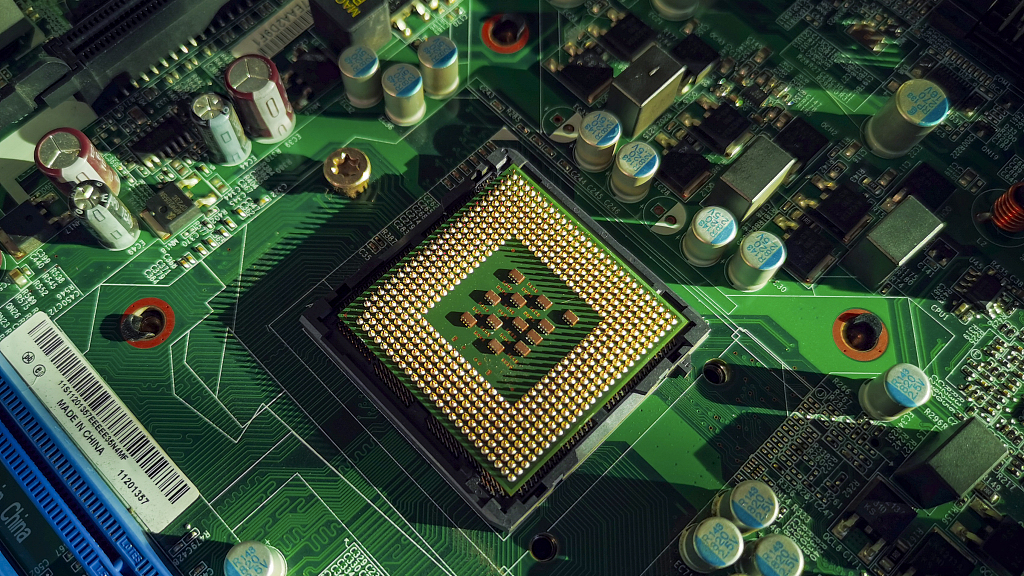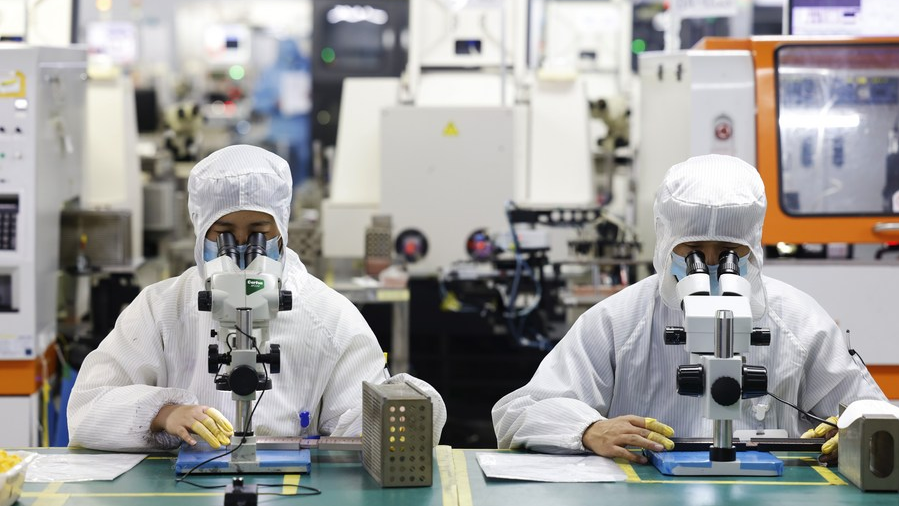
Editor's note: Djoomart Otorbaev is the former prime minister of the Kyrgyz Republic, a distinguished professor of the Belt and Road School of Beijing Normal University, and the author of the forthcoming book "Central Asia's Economic Rebirth in the Shadow of the New Great Game"(Routledge, 2023). The article reflects the author's views and not necessarily those of CGTN.
The previous article showed that the competition between the leading countries for developing modern semiconductors, which are in great demand in almost all high-tech industries, has intensified. Understanding the critical importance of leadership in developing semiconductors, the U.S. administration has taken draconian measures to prevent exporting these technologies to China. Accordingly, we will discuss what direction the semiconductor industry will develop and whether China can play catch up.
U.S. companies worry China will retaliate by restricting their firms' access to its vast market. Nonetheless, China has chosen to strengthen support for its national champions. They are: Semiconductor Manufacturing International Corporation (SMIC) in logic chips, Yangtze Memory Technologies Corporation (YMTC) in memory chips, and domestic manufacturers of the latest equipment.
Chinese President Xi Jinping said at the 20th National Congress of the Communist Party of China (CPC) on October 16, "China has also joined the ranks of the world's innovators with breakthroughs in some core technologies in key fields.”
The semiconductor sector is one of the few critical high-tech segments where China is lagging, but the gap is narrowing. Firms like Shanghai-based, state-owned SMIC are investing billions of U.S. dollars in semiconductors' research and development.
With an unprecedented 30.6 percent growth in semiconductor chip manufacturing in 2020, the semiconductor industry in Chinese mainland surged to $39.8 billion in total annual sales, according to an SIA analysis. The U.S. accounted for 37 percent of the world's semiconductor industry in 1990 and that has changed in the last thirty years. In 2020, China accounted for 37 percent of global chips production, South Korea for 21 percent and Japan for 15 percent, compared to 12 percent in the U.S.
In July, Canadian research company TechInsights disclosed that, despite sanctions and restrictions, SMIC has achieved the production of a 7 nm chip and using it in their products. In a follow-up report, TechInsights confirmed that the quality of the 7 nm chips produced by SMIC is world-class.
Nobody expected SMIC to break the 7 nm barrier so soon. Most analysts believed that SMIC could only produce 14 nm chips and it would take years to create new generations of semiconductors. More than 70 percent of semiconductor revenues and 90 percent of modern chips are built on 7 nm or older processes, to which China now has access to. SMIC was able to succeed, which was founded in April 2000, by recruiting foreign talents. A year after its opening, the firm hired 1300 employees, 400 of them came from from the U.S., Japan, South Korea, and China's Taiwan region.

Workers make chips for export at an electronics company in Sihong, east China's Jiangsu Province, February 23, 2022. /Xinhua
Workers make chips for export at an electronics company in Sihong, east China's Jiangsu Province, February 23, 2022. /Xinhua
Additionally, SMIC has developed its 5 nm chips using locally produced lithographic machines and technologies and plan to build those chips by 2025. SMIC isn't the only Chinese firm making headlines. Last year, Alibaba introduced one of the most advanced applications called Yitian 710, which uses a 5 nm server chip designed to work in the Internet of Things (IoT).
Therefore, U.S. sanctions won't harm the Chinese semiconductor industry. In the short term, this will slow down the growth of high-tech industries, such as artificial intelligence or supercomputers. But a number of experts believe that in the medium term, China could reach parity or surge ahead in competition with the West.
Moreover, competition for producing 2 nm chips stands on the horizon. Unlike the previous stages of rivalry in high-tech areas, competitors have almost equal starting conditions. China is accelerating development of the latest Electronic Design Automation (EDA) equipment, collaborating with the American company Cadence, which has joint ventures in China and offers its design programs. China is investing into developing alternative materials to silicon, such as carbon. Beijing has already included research into carbon fibre, graphene, silicon carbide and other carbon-based composites in its 14th Five-Year Plan. The list of accelerated technology competition goes on and on.
On November 14, billionaire Warren Buffett's Berkshire Hathaway has reportedly acquired a stake in Taiwan Semiconductor Manufacturing Co. (TSMC), the world's largest chip maker, which could be worth more than $5 billion. Shares of the Taiwanese manufacturer on the news of the deal rose by more than 10 percent.
Even with the current global economic slowdown, the vigorous struggle for supremacy in developing and creating the latest semiconductors won't be waning. Semiconductors are becoming the primary molecules to shape the future world of artificial intelligence, virtual reality and supercomputing. No one is prepared to lose the fight in these all important fields.
(If you want to contribute and have specific expertise, please contact us at opinions@cgtn.com. Follow @thouse_opinions on Twitter to discover the latest commentaries in the CGTN Opinion Section.)